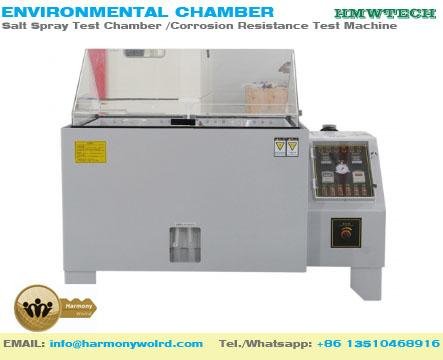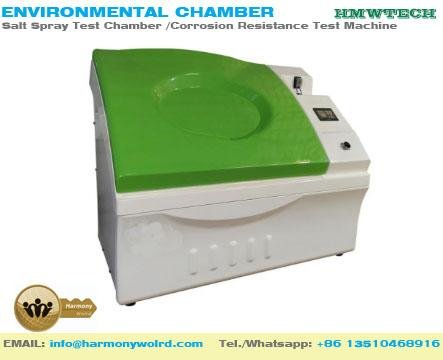Corrosion Testing
HMW's Corrosion testing laboratory offers numerous corrosion and material degradation testing services. Corrosion testing is often performed using ASTM B117 test.

Corrosion testing has a positive effect on the development, design and lifespan of numerous products. For industries such as aerospace, transportation, and medical devices, this type of testing is vital to ensure the proper development and durability of the product, as it will reduce the risk of corrosion.
What is Corrosion?

Corrosion is the gradual destruction of materials (usually metals), by chemical reaction with their environment. Corrosion degrades the useful properties of materials and structures, including strength, appearance and permeability to liquids and gases.
Worldwide, those damages cost up to 2.5 trillion US dollars which is equivalent to 3.4% of the global GDP in 2013. Every year, the United States alone loses 451 billion dollars on corrosion repairs which represents 11% of the country’s total budget and 2% of its GDP. In Canada, 5.2% of its country’s GDP is lost to corrosion every year. On the industrial level, rust found on metal, for example, can create health and safety concerns or lead to equipment failure and delays in production.
What Are the Different Types of Corrosion?
There are many types of corrosion that can occur on materials as highlighted by the non-exhaustive list shown below which can induce damage to various parts of a structure or material.
- Galvanic corrosion: powder-like white or grey deposit.
- Exfoliation: flaking and loss of metal thickness.
- Pitting: holes in the metal surface.
- Filiform: paint bulging and longitudinal.
- Crevice: severe local corrosion along adjoining surfaces.
- Integranular: normally only perceived by cracking.
- Fretting: destruction of the natural protective film resulting from slight relative movement between mating surfaces and loss of metal from surfaces followed by oxidation.
- Stress: normally only perceived by cracking with fast crack propagation leaving bare metal subject to corrosion.
- Microbiological: local surface attack or formation of deposits such as fungi.
How is Corrosion Testing Done in a Laboratory?
There are many types of tests for corrosion depending on the variables and environment your material will be subjected to in real life as listed below.
- Electrochemical
- Cabinet
- Salt spray fog
- Humidity
- Corrosive gas
- Cyclic
- Immersion
- High-Temperature & High-Pressure
- Atmospheric
- Seawater
- Freshwater
- Soils
- Industrial application
- High-Temperature
One of the most popular standardized test methods is the ASTM B117 Salt Spray test, as it provides good repeatability without being too expensive. It is used to assess the corrosion resistance of coated or otherwise surface-treated samples. ASTM B117 is not a good time predictor in terms of accelerated aging/predictability as it provides static conditions.

Cyclic corrosion test methods are intended to be more realistic for assessing material corrosion resistance than traditional steady-state exposure tests. Since real-world atmospheric exposures typically include wet and dry conditions, laboratory cyclic corrosion tests can be used to reproduce these natural cyclic conditions in an accelerated manner.
Corrosion Testing Standards
ASTM B117
Neutral salt spray testing ASTM B117 is arguably the best-known and still the most used corrosion test in the world. Numerous test methods, like MIL-STD, SAE or even ASTM method,s still refer to ASTM B117 for corrosion testing even if more specific and advanced test methods are now available. The main reason remains that so many companies around the world have so much data on the behavior of their products and materials based on ASTM B117.
ASTM G85
ASTM G85 can be seen as an improved version of ASTM B117 to some extent. The standard uses the basic principles of ASTM B117 but adds the specificities of certain industry sectors in order to address their particularities.
ASTM D5894
ASTM D5894 integrates more natural factors than traditional corrosion tests like ASTM B117 or ASTM G85. By integrating the effects of UV, temperature, and humidity variations, ASTM D5894 improves the correlation with natural corrosion observed in the field.
Other Related Test Methods to Corrosion Testing
For additional test methods related to Salt Spray Testing, we invite you to visit the following pages: ASTM B117, Cyclic Corrosion Testing, Coating Testing, and Accelerated Aging Testing.
If you have any questions about corrosion testing, we invite you to contact us today. It will be our pleasure to answer your material testing questions and custom testing requirements.